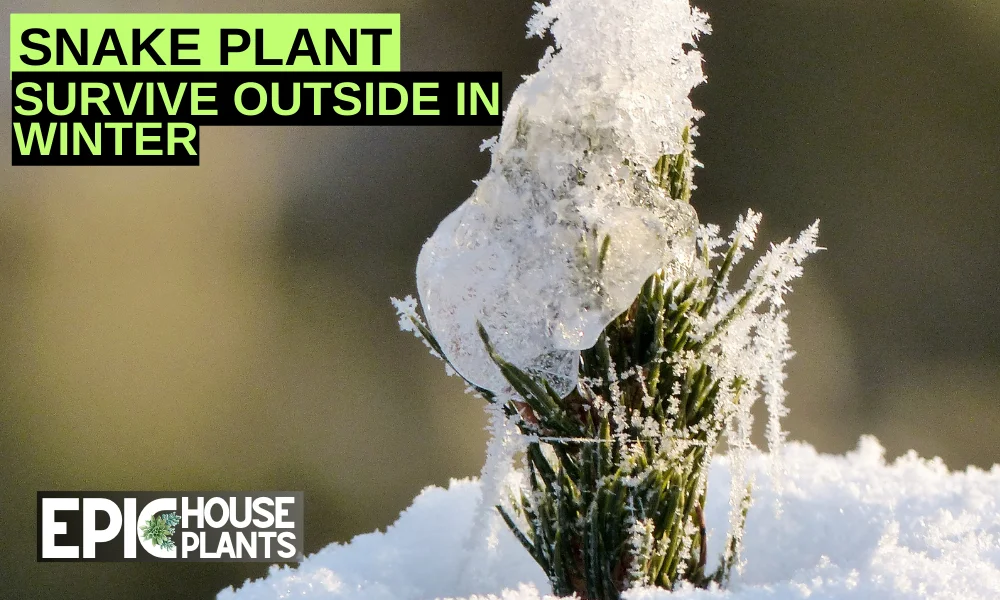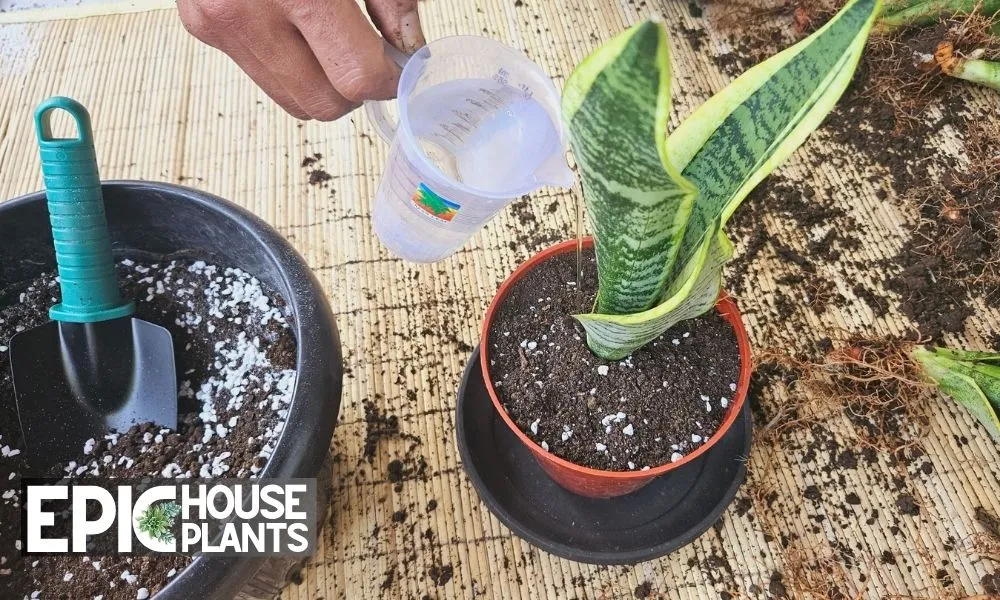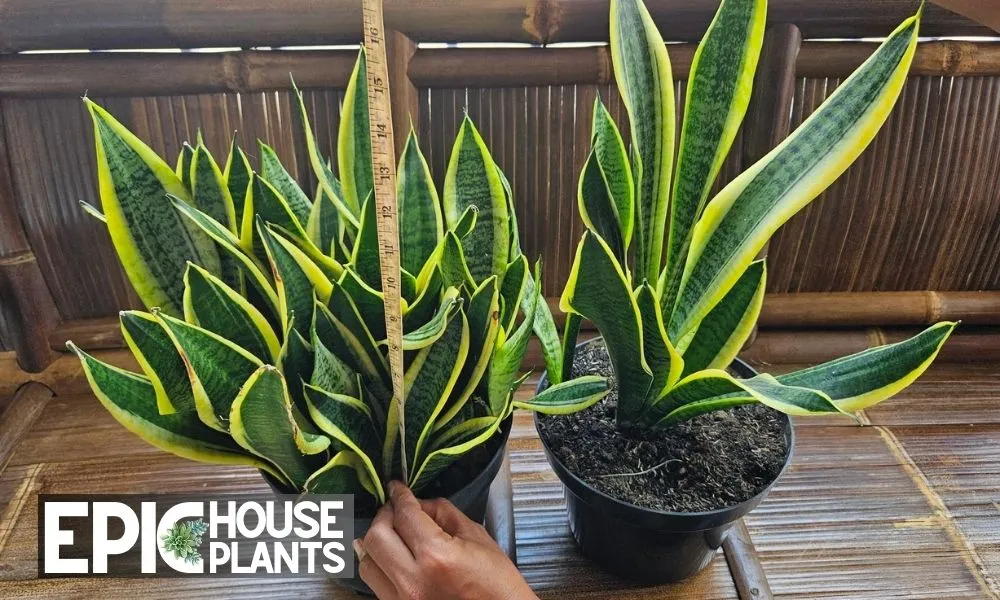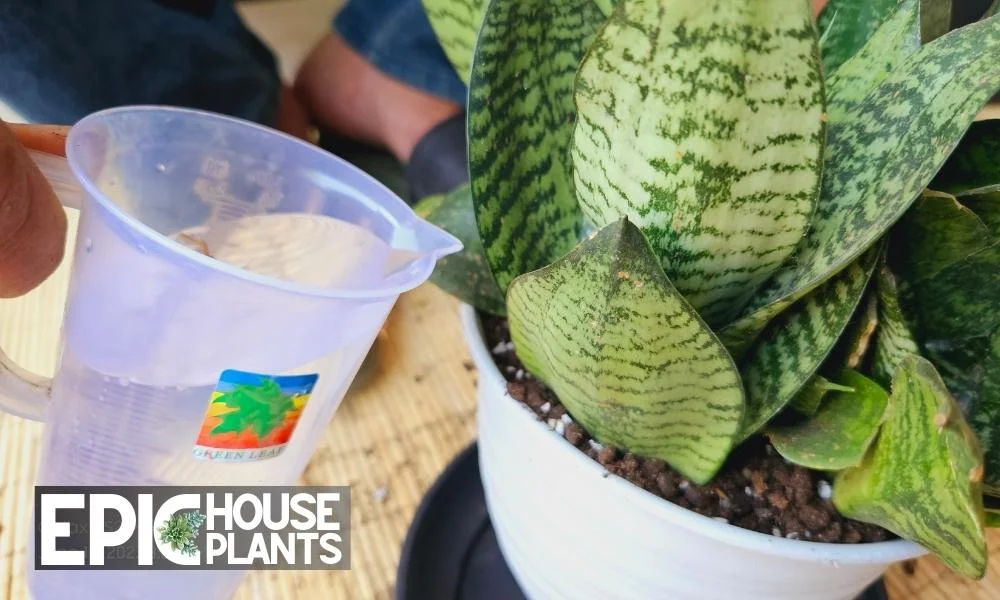The Snake Plant, also known as Mother-in-law’s tongue, is a popular houseplant due to its hardy nature and low-maintenance requirements. But can these resilient plants survive outside in winter?
The answer is, it depends on several factors. If you’re considering placing your Snake Plant outdoors, it’s important to understand the temperature tolerances and necessary precautions to ensure your plant remains healthy and vibrant.
This article will provide a comprehensive guide on how to care for your Snake Plant during the winter months.

Understanding the Winter Hardiness of Snake Plants
Snake Plants can indeed survive in winter as long as the temperature doesn’t reach lower than 55 degrees Fahrenheit (approximately 12.8 degrees Celsius). Temperature is the most critical factor determining the survival of Snake Plants in winter.
When the temperature drops below 55 degrees Fahrenheit, the Snake Plant will stop growing. Even more crucially, exposure to frost temperatures can freeze the cells of your Snake Plant, disrupting the flow of nutrients and water.
It’s important to note that Snake Plants are native to West Africa, where they thrive in warm, tropical environments. That’s why they don’t fare well in freezing temperatures.
Tips:
If you live in USDA Hardiness Zones 9-11, where the temperature never drops below 55 degrees Fahrenheit, you can grow the Snake Plant outdoors all year round.
On the other hand, if you reside in a colder zone, it’s advisable to grow your Snake Plant in a pot. This way, you can easily move the plant inside when winter comes.
💡Also Read: For more comprehensive tips on how to care for your Snake Plant during different seasons, you can check out this detailed guide: Can Snake Plants Live Outside?
Identifying Signs of Cold Damage or Stress
Just like humans, plants can also suffer from cold stress. You might not be aware that your Snake Plant has suffered damage due to cold weather, as the signs may appear up to 4 weeks after the plant has been exposed to severe temperature changes.
If the Snake Plant is left untreated, rot can begin to set in. Recognizing the signs early and knowing how to respond can help your plants recover and thrive.
Signs of Stress
One of the most common signs of cold stress in Snake Plants is wilting or drooping leaves. This is often the plant’s first response to cold shock. Additionally, the leaves may also turn yellow or brown, indicating potential cell damage caused by the cold.
Growth Changes
In some cases, a Snake Plant exposed to prolonged cold temperatures may display stunted growth or even die back. If your Snake Plant isn’t growing as vigorously as usual, it might be a sign of cold stress.
Leaf Damage
The leaves of the Snake Plant are its primary means of photosynthesis, so any damage can significantly affect its health. Cold-stressed plants may show signs of physical damage, such as blisters or spots on the leaves.
The Signs of Frost Damage
Recognizing frost damage in Snake Plants is crucial for their survival during the colder months. When the plant’s cells freeze, they lose their integrity and structure, leading to visible signs of damage.
Changes in Leaf Color and Texture
The frozen parts of a Snake Plant leaf tend to be off-color compared to the other parts of the leaf, appearing as if the leaf has become waterlogged. Furthermore, due to the damage to the cells in the leaf, the frozen parts will feel soft and mushy.
Wrinkled Skin
Frost damage can also cause the skin of the Snake Plant’s leaves to appear wrinkled. As the water within the leaf cells expands upon freezing, it stretches the skin. Once it returns to a liquid state, the skin becomes saggy and wrinkled.
Rotting Leaves
In severe cases of frost damage, the affected leaves may start to rot. This is often accompanied by a foul smell and the leaves becoming slimy to the touch. If not addressed immediately, this condition can spread to the rest of the plant and eventually cause its demise.
Discoloration
Leaves affected by frost damage may also display discoloration. They can turn from a vibrant green to a dull brown or black color. This change in color is usually a sign that the cells within the leaves have been damaged beyond repair.
Preventing Snake Plant from Freezing
Winter can be a particularly challenging time for snake plants, especially for those grown outside. However, there are steps you can take to prevent your snake plant from freezing and ensure its survival through the colder months.
Transferring Snake Plant Indoors
If you have the luxury of space indoors, consider moving your snake plant inside for the winter. This is particularly effective if your snake plant is potted, making it easily transportable.
However, while doing so, ensure that you avoid placing your plant by heating vents, fireplaces, or other heat sources, as these can cause damage. Furthermore, the snake plant’s lighting requirements should also be taken into account, as they still need sufficient light to thrive during the winter months.
Using Frost Proof Cloth for Protection
When it’s not possible to bring your snake plant indoors, another effective preventative measure is to cover your snake plant with a frost-proof cloth.
This can provide an insulating layer to keep your plants and the ground warm, preventing them from being exposed to freezing ambient air. Just remember to uncover the cloth if the temperature gets warmer to avoid overheating your plant.
💡Also Read: For more information on snake plants’ light requirements, you can read the article “Do Snake Plants Need Light?“
Reviving Damaged Snake Plants
Even with preventative measures, your snake plant might still sustain some damage due to extreme cold. But not to worry, there are ways to revive your frost-damaged snake plant.
Relocation and Pruning

If your snake plant shows signs of cold damage, the first step is to move it to a warmer location, if possible. After relocation, prune any severely damaged leaves or rotten parts to prevent the spread of rot. Always remember to use sterile tools to avoid introducing pathogens to the plant.
Suspended Watering

A common misconception is that watering a damaged plant will help it recover. However, this isn’t true for snake plants. In fact, watering could exacerbate the damage. It’s better to hold off watering until your plant shows signs of recovery.
Remember, as long as the damage wasn’t too extensive, your snake plant should make a full recovery with the right care.
Winter Care for Snake Plants
Caring for your snake plant during winter involves understanding its specific needs during this time.
Treating Snake Plants as Succulents
Snake plants are succulents, which means they store water in their leaves and roots. During winter, which is a dormant season for these plants, they require specific care regarding temperature, watering, humidity, and placement. For example, snake plants require little water during colder months, so watering once a month should be sufficient.
Avoiding Fertilizer and Extreme Temperatures
It’s also crucial to avoid fertilizing your snake plant in the winter, as this is a time of rest, not growth. Keep your snake plant away from potential sources of unusual heat or cold, such as fireplaces, drafty doorways, and heating vents.
Proper Placement
Finally, choosing an appropriate placement for your snake plant during winter is vital. This could mean bringing it indoors or finding a sheltered spot outside if your climate allows.
With these tips, you’ll be well-equipped to care for your snake plant through winter and see it thrive in the spring.
Author

Pudji Haryanto
Pudji Haryanto is a writer and urban farmer with a passion for cultivating plants. He has over 15 years of experience in agriculture and currently manages a 65,000 square foot rice-field and yard filled with various plants, including vegetables, spices, flowers, and garden plants.


